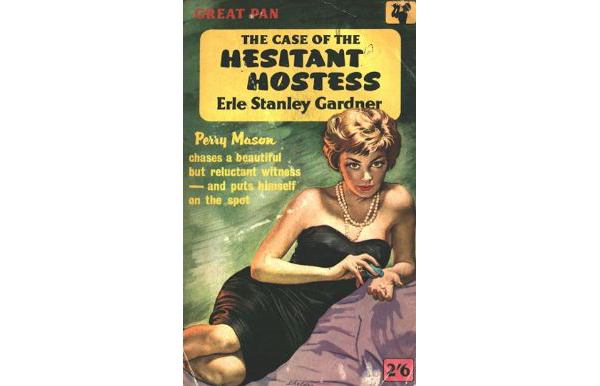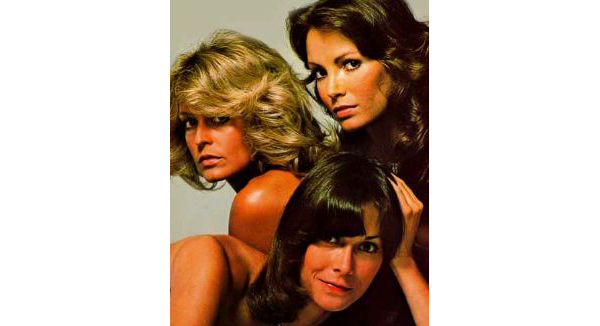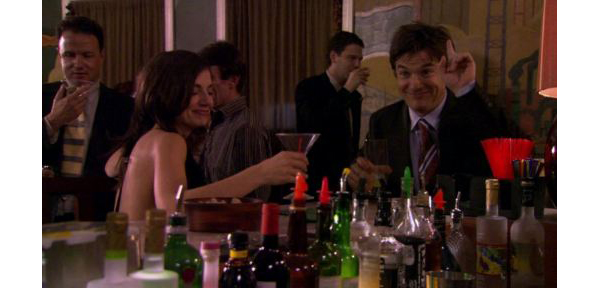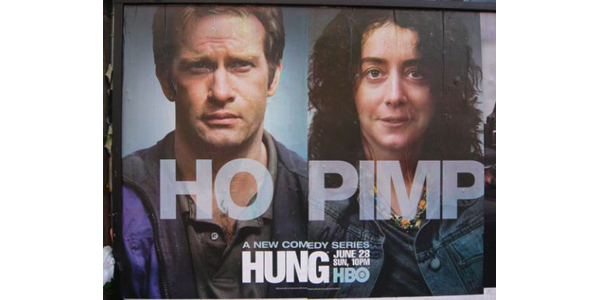"To the moralist prostitution does not consist so much in the fact that the woman sells her body, but rather that she sells it out of wedlock."
In the Beginning
In the early days of TV, programming was more family-oriented, censors were tough as nails, and the Sexual Revolution was decades away. For that reason, prostitution was never really dealt with on-screen ... at least, not explicitly.
For example, Miss Kitty, from the TV show Gunsmoke, was sanitized during the show's conversion from radio to the small screen.

While it was clear that she engaged in prostitution on the radio show, the TV version of her character only hinted at what she was doing upstairs. But while the implications were there, it was never explicitly stated that prostitution was occurring in the saloon where Miss Kitty worked.

In a similar move, Erle Stanley Gardner's The Hesitant Hostess was "de-smutted" when it was adapted into a Perry Mason TV mystery in the late 50s. The character of Daphne was changed from a sex worker in the original story to a taxi cab driver for the TV version, as producers thought an episode that dealt with both drugs and prostitution would be too indecent.
The Sexual Revolution Leads to a TV Revolution
After the Sexual Revolution in the late 1960s, programming on TV began to slowly push the envelope, and storylines about prostitution became less taboo.
While they were by no means explicit, these stories did become more direct in the way they discussed the sex industry. By 1974, Police Woman star Angie Dickenson was acting in episodes where the storylines had her character go undercover as a prostitute in LA.

Two years later, in the 1976 Charlie’s Angels episode “Angels in Chains,” the Angels investigate a country prison farm and a nearby small-town sheriff. Once the girls con their way into the prison farm, they discover that young women without relatives are being arrested, and can’t leave jail unless they exchange their bodies for an “early release.”
Later that year, the Angels went undercover as streetwalkers to investigate a pimp who attacked a young music teacher, and interact with a prostitute who has a mental illness.
These early prostitution storylines would set the standard for how prostitution would be dealt with on TV for decades. The profession was used as a plot device for crime dramas, but rarely as the central premise for a program. The prostitutes were rarely given complex characterizations, often acting as one-dimensional examples of “fallen women.” It would be many more years before complex prostitutes would be shown on television.
Playin’ It for Laughs
One way that TV creators began to invigorate the “hooker with a heart of gold” stereotype was to inject humor into storylines.
In one sketch from Kids in the Hall, the “knight in shining armor” trope was turned on its head when a man falls in love with a prostitute, proposes to her, and hears the response, “Eh, it’s your money.” The punch line comes when, after they have been married for years and have kids together, the man finally runs out of money, and the former working girl calls up her old pimp to have him beat up the husband.

In a particularly funny episode of Arrested Development, Michael unwittingly hires a high class call girl to service his entire office after mistaking her for both his sister and a professional accountant.

And back when Tina Fey was still a regular on Saturday Night Live, she did a skit about a hooker named Lolene who is only nine inches tall. No one can figure out quite how she does it.
Let’s Hear It For the Boys
While the majority of prostitutes portrayed on TV shows are female, there are a few male sex workers worth mentioning. In one episode of Showtime’s Secret Diary of a Call Girl, Belle has a dalliance with a male prostitute to get some perspective on her own career.

Hung follows Ray Drecker, a high school teacher trying to support his family, and just like Walter White of Breaking Bad, Drecker chooses to make more money on the side by starting an illegal business. While Walt chooses to cook meth, Drecker sells his body with the help of “Happiness Consultant” Tanya.
The yin to HBO’s Cathouse is Showtime's Gigolos, a “reality” show focusing on the lives of a group of heterosexual male escorts in Las Vegas.

However, the sex may not be as real as it seems. The Daily Beast located one woman who appeared on the series who stated that the show is entirely fictional and that the sex is simulated.
In all three examples, the men turn to prostitution with female clients because they love the money, and love it (arguably) more than the sex itself.
Crime and Punishment
In the majority of cases, it seems that when a prostitute shows up as a character on a TV show, she is either a corpse or in danger of becoming one. Numerous episodes of CSI, House, The Shield, and similar programs have a track record of treating prostitute characters in this way, and nearly all depictions of homosexual sex workers on TV are within some spectrum of crime drama.
By treating these types of characters are criminals, many shows dehumanize sex workers. In her review of Lifetime’s made-for-TV movie The Craigslist Killer, former sex worker Melissa Petro argues that “By sanitizing the true profession of the ‘masseuse’ hired by Craigslist killer Philip Markoff, Lifetime only reinforces the idea that sex workers can't be sympathetic victims...Pervasive is the belief that by engaging in prostitution, a woman forfeits all rights and deserves no protections...For Lifetime to sanitize Markoff’s victims of their true identities only perpetrates such myths.”
Where No John Has Gone Before
Science fiction may not be your cup of tea, but shows that speculate about the future of the human race often make interesting predictions about the future of the sex industry.
Going all the way back to the original Battlestar Galactica series from the late 1970s, we have the character Cassiopeia, a "Socialator" (a euphemism for sex worker.) However, after the pilot episode was filmed, producers changed her profession to a more “acceptable” medical/nurse role.
When Galactica got a reboot in 2003, prostitution was brought back as the central plot device for the episode “Black Market.” Lee Adama starts seeing a prostitute, and grows to care for her. However, after it is revealed that she has been spying on Lee for a crime boss, their relationship comes to an end.

On the other end of the sci-fi spectrum, the character Inara Serra from Joss Whedon’s Firefly is of a much higher class than the sex workers on Galactica. In the Firefly world, Inara is what is known as a Companion: a role that places her on a higher social strata than the captain of her ship. In fact, Inara’s nickname is “The Ambassador,” as her breeding and social status allow the ship to land on worlds that wouldn't accept them without Inara's charms.
Concluding Thoughts: Current Trends in the Portrayal of Prostitutes on TV

Modern TV shows have no need to try and mask the professions of sex worker character. Secret Diary of a Call Girl has finished its run, and Gigolos, while almost universally panned by critics, is making waves. We’re years past noted TV prostitutes like Laurie on The West Wing and Joanie on Deadwood. Last season, NBC’s Community featured a level-headed, middle aged escort who dated Pierce and gave Jeff some great relationship advice.
While there are a few exceptions, for the most part it seems that TV prostitutes are being dealt with in a more nuanced way with each passing year. And with cable channels able to pursue mature storylines more easily than in decades past, today's TV show writers are committed to finding new tales to tell about the world’s oldest profession.